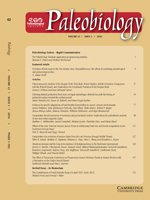Dental microwear analyses of ungulates and other large herbivores rely on correlations of diet and microwear among extant ungulates, primarily ruminants. Microwear is considered a ‘taxon-free’ method of paleodietary analysis. The properties of food are associated with causality of microwear, but the possibility that heritable properties of the consumer (tooth morphologies, masticatory dynamics, enamel mechanical properties, digestive physiologies) may introduce bias is not considered. Using an observer blind method of light microscopy, we examined the distribution of microwear features on the molars of eight species of ruminants and perissodactyls. Grazing and browsing ruminants had statistically different numbers of scratches forming discrete data clusters. Perissodactyls differ in the numbers of scratches and pits but without discrete browser and grazer clusters. Microwear features were distributed homogeneously across ruminantmolars and strongly predictive of diet fromthe labial edge of the molar to the lingual edge. Microwear was heterogeneously distributed across perissodactyl molars with more pits on the labial edge andmore scratches on the lingual edge. In perissodactyls, microwear sampled from the labial edge was strongly predictive of diet, while microwear sampled from other areas were not. Discriminant function analyses of microwear assigned individual molars to diets (browser and grazer) and clades (ruminant and perissodactyl) with similar success (70–73%) indicating that phylogeny and diet influencemicrowear equally. Rhino microwear was more sensitive to clade membership while other perissodactyl microwear was more sensitive to diet. Although it is not clear what heritable variables may phylogenetically bias dentalmicrowear, extant ruminants may not be appropriate models for themicrowear of other large herbivores.
How to translate text using browser tools
9 November 2015
Comparative dental microwear of ruminant and perissodactyl molars: Implications for paleodietary analysis of rare and extinct ungulate clades
Matthew C. Mihlbachler,
Daniel Campbell,
Michael Ayoub,
Charlotte Chen,
Ishrat Ghani
ACCESS THE FULL ARTICLE

Paleobiology
Vol. 42 • No. 1
Winter 2016
Vol. 42 • No. 1
Winter 2016




